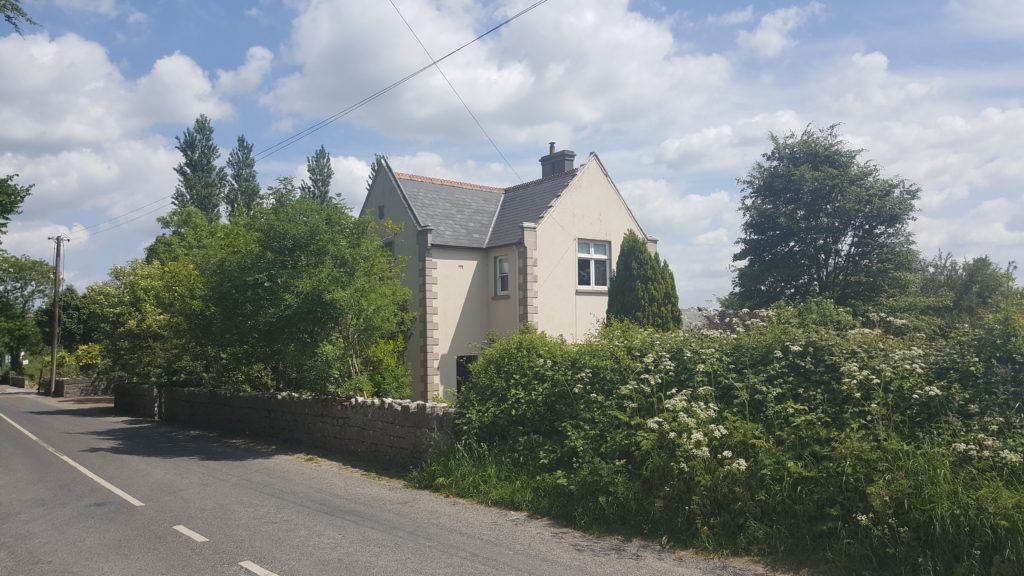Education in Castlemagner dates back to 1812, it is recorded that a school in Cecilstown was opened on June 24, 1812. The walls were of made of stone and mortar, it had a thatch roof and was erected by Sir William Beecher who also paid the rent. The school had two desks and no seats, each desk accommodated twenty pupils.
This school was not attached to any of the churches. Monday was set aside for religious instruction and parents were free to withhold their children from attending this day. School opened at 8.00 a.m. and finished at 6.00p.m. in spring, summer and autumn. In winter, school hours were from 9.00am. to 4.00pm. Five days were given to common branches of moral and literary work for ten hours each day. The school was attended by 120 children (80 boys and 40 girls). James Ryan was the teacher in this school in 1812.

The school was built for the children of the tenants of Sir William Beecher. In 1832 the National Schools Bill was passed and five years later a new school was established in Cecilstown for 50 boys and 30 girls. This new school was paid for by the National Board of Education and Sir William Beecher. As well as these schools, Roman Catholic children were taught at a hedge school at Castlemagner cross from the 1800s to 1848. Two teachers are mentioned for this hedge school, John Davis and Dan McCarthy. This hedge school was discontinued in 1848. In 1852, the Scott sisters taught sewing and reading to Protestant girls in Cecilstown.
In 1850, Michael Ryan started another hedge school for Roman Catholic children in Cecilstown. In 1848 a national school was built by Sir William Beecher. This school was open to all children in the parish. School records date back only to 1863. In 1848 there were two separate schools, a boys downstairs with a headmaster and an assistant, as well as a girls school upstairs with a headmistress and an assistant.
Pupils paid an annual fee ranging from 14 shillings to nothing. Attendance was poor, in 1883, the attendance record ranged from as low as 10 days to the 156 days recorded by a boy from Cecilstown. The occupation of pupils’ parents was also recorded. All trades are mentioned but seldom that of farmer since this term applied exclusively to landowners.
A register of students and their parent’s occupations from 1918 are available here.
Children remained in school until 15 or 16 years old. Children in classes 4, 5, and 6 were examined in agriculture annually. School reports showed a special column for Religious poetry and scripture but no marks were recorded.

The records dating back to 1848 were destroyed in a fire in the girls’ school. Research in education from 1848 to 1917 reveals some interesting facts. A wide variety of subjects were taught: Maths (four branches), English grammar, poetry, reading, spelling, drawing, music, physical and applied science, trigonometry and agriculture. Writing was done on slates and paper.
School Inspector reports were often bad. In 1893 the school inspector demanded attention be paid to reading and grammar and required some improvement before the school inspector’s next visit. In 1917, a letter to Sir Eustace Wrixon-Becher from the Department of Education brought to his notice that Rural Science and Horticulture were not taught at the school, despite the fact that Mr. O’Hanlon was qualified to teach both subjects. The necessary equipment would be provided if there were sufficient students the letter concluded.
NOTABLE DATES:
1881 Ed Ryan was principal and his wife, a Miss O’ Flynn from Ardaprior, was principal in Liscarroll. Billy Alex O Callaghan drove her to Liscarroll every day
1891 Mr Pat Murphy was principal
1904-1949 Mr. Tim O’Hanlon served as principal
1949 Mr Jack Walsh became principal
1956 Ballyhass became co-educational
1964 The present school was built


My grandmother immigrated to New York in 1897. She had been the teacher’s assistant at Ballyhass School for, I believe, two years until that time. She passed away before I was born, but I grew up hearing stories of the school and also of Lord Beecher. Thank you very much for this interesting article.